Pencil grasp
To draw pictures, your child has to be able to use a pencil appropriately. About 80% of children learn to functionally grasp a pencil by the age of 4 years. The following are a few examples of how a pencil should be held:
Functional pencil grasps
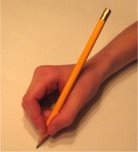
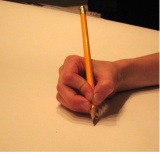
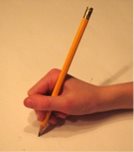
Immature or non-functional pencil grasps past the age of 4 years
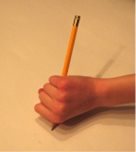
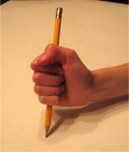
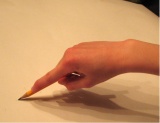
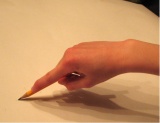
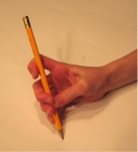
Pencil grasps to monitor
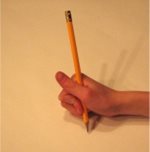
A functional pencil grasp is preferable; however, there are many different ways that children hold a pencil. It is important to determine whether or not their drawing skills are affected by an incorrect pencil grasp (inability to colour within lines, hand pains, etc.). Modifying their incorrect pencil grasp is necessary only if it hinders their ability to complete the task.
Drawing coordination
By the age of 3 years, children are able to draw vertical lines, horizontal lines, and circles. At around the age of 3.5 or 4 years, they begin to trace more representational forms by connecting dots. If you believe that your child has difficulty drawing, you can use some of the following ideas to make drawing easier for them. Remember that you can always guide your child’s hand by placing your hand on theirs.
-
Begin by showing your child a sample picture that is easy to draw (ex: a sun). Then, draw a part of the picture and let your child complete it. For example, draw the circle with a few ray lines and ask your child to add more ray lines.
-
Draw the picture step by step, line by line. On a sheet of paper, trace a circle that your child can then copy on their own sheet of paper. Then, add ray lines around the circle that your child can then copy around their own circle. Use different coloured pencils (one colour for the circle and another for the ray lines) so that your child can properly observe the added lines.
-
Show your child a sample picture and ask them to copy it. Below are some simple ideas:
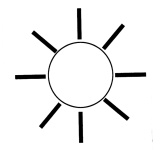
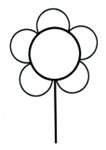
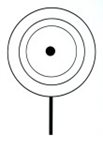


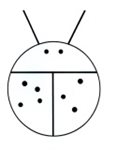

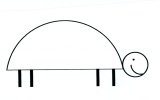
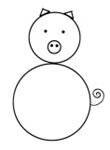

-
Once your child is able to copy a picture by looking at a sample, ask them to draw it by heart. This means that you should turn the sample picture face down so that your child can try to recall the steps to follow.
-
Gather all your samples together to create a little picture book that your child can use to keep practicing the drawings.
-
Put up their drawings on a wall or the refrigerator to show them how proud you are of their work!